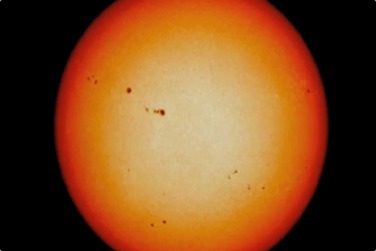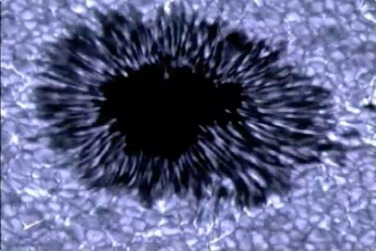Never look directly at the sun, unless you are absolutely sure that your eyes are shielded by a proper solar filter. But if you're appropriately protected, any telescope will reveal sunspots on the sun's surface.
Sunspots are a bit like storms in Earth's atmosphere; they grow, intensify, and then break up. The big ones can last for months.
Look for a darker region (the umbra) surrounded by a lighter region (the penumbra). Yes, these are the same terms used to describe the moon's shadow during a solar eclipse, but they mean something very different here.
Sunspots are low-temperature regions in the normally 5,500 degree Celsius (9,900 Fahrenheit) photosphere—4,000 degrees Celsius (7,800 Fahrenheit) for the umbra, 4,700 degrees Celsius (8,500 Fahrenheit) for the penumbra. Even the smallest sunspots can be larger than the diameter of Earth!
The number of sunspots varies over an 11-year cycle. At the cycle's peak, you may see several dozen sunspots at a time. It's fun to track the sunspots across the face of the solar disk. By doing this for a few days, you can figure out the approximate length of time it takes the sun to rotate. The sun, being a fluid mass, doesn't all rotate at the same rate. It takes about 25 days for a point near the equator to go all the way around, but up to 35 days for a spot near the poles. Astronomers call this differential rotation.
If you look through a fairly high-power telescope, you'll be surprised at the appearance of the sun's surface, especially around sunspots. It looks granular, like a pot of bubbling oatmeal! These grains are in fact cells of gas—the hotter, brighter centers are rising from the sun's surface, and the cooler, darker edges are sinking back in, all within ten minutes or so. But remember the scale here: Each bubble is about 1,000 kilometers (620 miles) in diameter!

